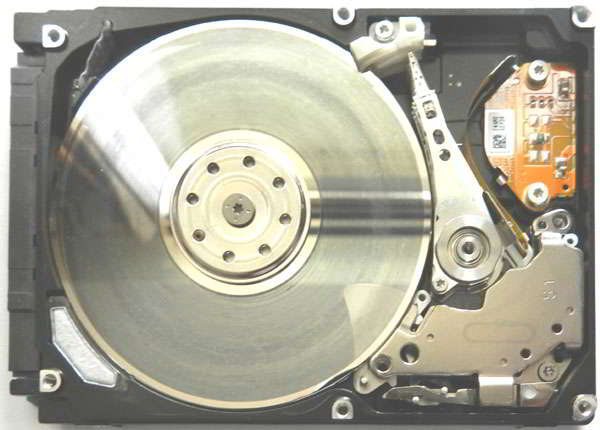What Happens If I Open a Hard Drive?
Opening a hard drive outside of a professional environment not only voids the manufacturer's warranty - it can also result in the permanent loss of your data. In other words, it's an unwise and potentially irreversible action that can cause serious damage to both the drive and the information stored on it.
Inside a hard drive are precision-engineered components that must remain free from contamination. Cleanroom laboratories are designed with strict air-quality controls to keep airborne particles away from the ultra-sensitive data platters. These platters are polished to a mirror-like finish and coated with a magnetic layer that stores your digital data.
Even a single microscopic speck of dust can have devastating consequences. If that dust interferes with the drive's read/write heads - tiny components that 'fly' nanometers above the spinning platters - it can cause them to crash into the disk, scratching away data and damaging the platter surface beyond repair.
Even if some data survives such exposure, the contamination makes recovery far more difficult, time-consuming, and expensive for data recovery specialists. Often, the damage is too severe to recover anything at all.
Aftereffects of an Intrusion

When a hard drive is opened outside of a cleanroom, its internal platters are exposed to small amounts of dust, moisture, and other airborne contaminants - substances that are always present, even in seemingly clean indoor environments. That's more than enough to accelerate the process of disk-surface erosion and data corruption. This is the primary reason why opening a drive as part of a DIY experiment is a serious mistake.
The drive pictured below is a laptop hard disk with platters that have been scratched down to their glass core. While some disks are made from metal (typically aluminum alloy), others - like the one in this image - are made from transparent glass. Regardless of the material, all platters are coated with thin magnetic layers on both sides to store data.
Even invisible dust particles can trigger a catastrophic chain reaction: instead of gliding smoothly over the surface, the read/write heads begin to collide with the contaminated platter, grinding away the magnetic coating. Over time, this damage worsens until the heads scrape down to the underlying glass - as shown in this case.
You can clearly see in the image that the platter appears almost transparent - not only clear of data, but physically see-through. Internal components, including the lower magnet of the actuator, are visible beneath the disk. This is a clear sign of severe physical damage and likely permanent data loss.
